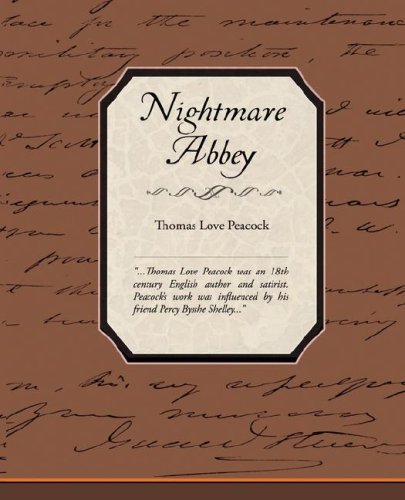
Nightmare Abbey
by Thomas Love Peacock
Publisher: T. Hookham 1818
ISBN/ASIN: 1605975443
Number of pages: 236
Description:
Nightmare Abbey was written in 1818. This satire pokes fun at the Romantic Movement in English literature. The characters in the novel are based on historic figures. Peacock sees the British as being obsessed with transcendental philosophical systems and morbid subjects of any kind. Many of the allusions in the book are specific to the period in which it was written, yet there is enough relevance to make this a delight to read.
Download or read it online for free here:
Download link
(multiple formats)
Download mirrors:
Mirror 1
Similar books
 The Heir of Redclyffe
The Heir of Redclyffeby Charlotte M. Yonge - D. Appleton and Company
First published in 1853, The Heir of Redclyffe was the most successful novel of the century. The protagonist, Guy, was a popular role model of noble virtue, while another character, Amy, was seen as the ideal Victorian wife -- redeemer and inspirer.
(10599 views)
 The Iliad and The Odyssey
The Iliad and The Odysseyby Homer - J. Johnson
Stories of love and war, hope and despair, and honor and glory, as relevant today as they were 2500 years ago. These two books are some of the most important books in the literary cannon, having influenced virtually every adventure tale ever told.
(26408 views)
 Memoirs of Fanny Hill
Memoirs of Fanny Hillby John Cleland - Project Gutenberg
Fanny Hill has been shrouded in controversy for more than 250-years, and banned in the US until 1966. Once considered immoral, even earning John Cleland a jail sentence for obscenity, the story of a young prostitute is today a best selling novel.
(17905 views)
 Gulliver's Travels
Gulliver's Travelsby Jonathan Swift - Temple Press
Four fantastic voyages of Gulliver, a ship's surgeon, an observer, a reporter, and a victim of circumstance. His travels take him to Lilliput where he is a giant observing tiny people. The novel was first published in 1726, yet still valid today.
(30378 views)